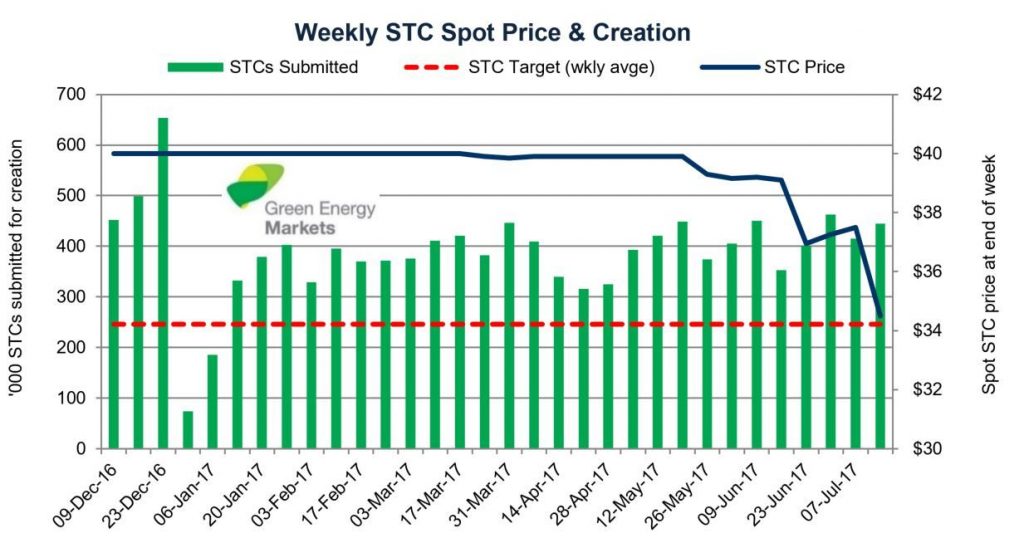A sharp drop in the price of small scale renewable energy certificates (STCs) has led to a sudden and (for many) unexpected rise in the cost of household solar installations – which is estimated to be approximately 10%. This will have major ramifications for installers as well.

STC Prices – How and Why?
According to Greenmarkets.com.au, STCs trade on the wholesale market at minimum parcels of 5,000. As per the above image, their website shows the last 6 months of STC movement – it’s actually been stable for a couple of years before that as well. According to Tristan Edis via Renew Economy , this month the “supply of STCs is substantially outstripping power retailers’ obligations for this year as set by the Clean Energy Regulator”. Edis noted on Twitter this morning that he was incorrectly quoted in a section of that article – and that the Q4 forward prices for STCs are $30.50, not $37.85. This projects more pain to come for the industry (at their lowest on Wednesday the STCs were at $26). Edis said that this is as a result of the Clean Energy Regulator underestimating the amount of STCs that would come on the market this year – so they’ll need to account for that when setting 2018’s target in order to try and stabilise the cost and keep it around $40. The short term effect is a ~10% rise in the cost of installations, which will slow down installers and also could affect current install contracts they have.
Small scale renewable energy certificates – how will this affect the market?
The drop in STC price will have a significant effect on installers at the lower end of the market – many installs are quoted nett of STCs i.e. leaving the risk of STC price fluctuation in the hands of the installer.
The price of an STC refers to a rebate (per kW) of an installed solar system – calculating a drop from $40 to $32 means the price for a 5kW system will increase by around $600 (it varies from state to state). It’ll also mean any installers who have quoted nett of STC will be out of pocket by a similar amount – so any installers who have a lot of current installs on the books and a cash flow problem could find themselves in serious trouble over these drops.
It also means the end user will be paying ~10% more for their solar installs for the rest of 2017 – assuming projections from the forward market hold up. We’ll see how this impacts Australian solar power as a whole over the coming months.

